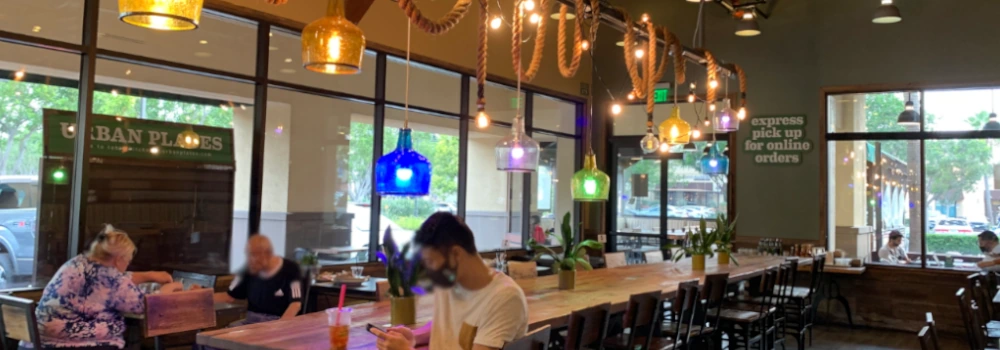
Why Pre-Shift Meetings Can Make or Break a Shift
In a busy restaurant, the first ten minutes before service can set the tone for the next five hours. That’s the power of a well-organized pre-shift meeting. When done correctly, it aligns your team with the night’s plan before the first ticket drops.
Industry guides emphasize that regular pre-shift meetings enhance communication, keep staff informed about specials and updates, and help managers execute their plans one shift at a time. For instance, Toast’s pre-shift overview demonstrates how brief huddles ensure staff are aligned on current updates and expectations. At Synergy, we regard pre-shift as a daily ritual that influences culture, execution, and guest experience.
Start with the Basics: Numbers, Flow, and Focus
On The Restaurant Roadmap podcast, Synergy Culinary/Operations Consultant Chef Eric Lauer breaks down pre-shift essentials:
“For me, pre-shift meetings always included the basic stuff. How many covers do we have on the books for tonight? What are the specials? What do we really want to sell?”
That framework provides both BOH and FOH with a shared understanding of the shift. Begin each pre-shift by quickly reviewing:
- How many covers are on the books, and when will spikes occur?
- Reservations, large parties, and VIP guests
- Specials, limited-quantity items, and items you really want to sell
Resources like WebstaurantStore’s pre-shift guide highlight that this operational overview is the foundation of a successful huddle: when everyone understands the volume, timing, and key items for the night, there are fewer surprises when the rush begins.
This part should be concise and factual—two or three minutes at most.
The Golden Standard Plate: Show, Don’t Tell
Chef Eric also discusses using pre-shift to set what he calls the “golden standard” for food quality and presentation.
“We would make a dish, we would present it at pre-shift. It was perfect, the exact way we wanted it plated… And it really set the tone for picture-perfect food for the entire shift.”
In practice, that means you prepare the featured dish, plate it exactly as you want it to leave the pass, position it so everyone can see it, and let FOH taste it after BOH walks them through the details. As you present it, review ingredients, flavor notes, sourcing, ideal selling language, and recommended drink pairings.
Pre-shift tastings like this turn your meeting into live training. Best-practice guides on pre-shift structure consistently highlight tastings and demos as some of the most effective ways to build confidence and increase upselling on the floor.
Pairings, Contests, and Sales Energy
Managing Partner Danny Bendas expands on how pre-shift can also boost sales and energize staff:
“I love your idea, Eric, on the food thing. I think you do a pairing—hey, this goes great with this wine or this beer, or let’s try to sell a cocktail. Or, hey, we’re doing a contest on desserts today.”
Apply the same playbook by highlighting pairings for the feature item, running a simple dessert or appetizer contest, and sharing yesterday’s wins and top performers. SevenRooms’ pre-shift checklist article notes that when teams are organized, informed, and motivated, they sell more—and daily pre-shifts are the natural time to align around those goals.
A Simple, Repeatable Pre-Shift Agenda
To keep pre-shift meetings effective and avoid eye-rolls, use a consistent structure. Operators and scheduling platforms like 7shifts’ pre-shift meeting guide recommend short, structured pre-shifts that cover operations, training, and motivation in 10–15 minutes or less.
Here’s an agenda you can adapt:
1. Welcome and tone-set (1–2 minutes)
Quick greeting, energy check, and a shout-out from the last shift.
2. Shift overview (2–3 minutes)
Covers, reservations, large parties, VIPs, staffing notes, and any floor-plan changes.
3. Menu focus and specials (3–5 minutes)
Present your golden standard dish, review ingredients and allergens, clarify 86’d items and limited quantities, and talk through pairings or promotions.
4. Service standards reminder (2–3 minutes)
Reinforce one or two non-negotiables such as greeting times, steps of service, table touches, or guest recovery.
5. Micro-training or safety note (2–3 minutes)
Offer a short skills refresher or a quick safety reminder around hot pans, knives, slips, or cross-traffic. Safety toolbox resources for restaurants, such as this food service safety talk, recommend frequent, five-minute reminders instead of long, one-time trainings.
6. Questions and open floor (1–2 minutes)
Give team members a chance to raise concerns or ask clarifying questions.
Make the Team Own the Pre-Check
Danny also shared an effective way to foster ownership from a project we did in Saudi Arabia. Instead of having the manager handle all final checks—such as dining room, lighting, and parking lot—they assigned specific pre-check tasks to different team members. Those team members would then report back during pre-shift: “This is good. Table 23 needs this or that.” The result? The team conducted the pre-check together, and the doors opened with 100 percent readiness.
You can rotate these assignments: one person for dining room and table setups, one for ambiance (lighting, music, temperature), one for restrooms and the host stand, and one for exterior and parking. This makes pre-shift a true team huddle instead of a manager monologue.
Best Practices That Make Pre-Shift Stick
A few habits distinguish average pre-shifts from game-changing ones.
- Be consistent: same time, same place, every shift
- Keep it short and focused—aim for 10–15 minutes
- Balance feedback with recognition, not only focusing on what went wrong
- Tie behaviors to metrics like check averages, comps, or reviews
- Use a straightforward pre-shift form or digital log so all managers follow the same playbook.
To learn more about kitchen operations and pre-shift best practices, watch our full Kitchen Ops Part 2: BOH episode of The Restaurant Roadmap on YouTube or listen on Spotify and Apple Podcasts. Chef Eric Lauer, Danny Bendas, and the Synergy team share real-world systems that link pre-shift structure to consistent, profitable execution on the line.
With over 35 years of restaurant consulting experience, Synergy can help you develop pre-shift playbooks, training tools, and KPI dashboards that make those ten minutes before service one of the most valuable parts of your day.
.png)





.png)





